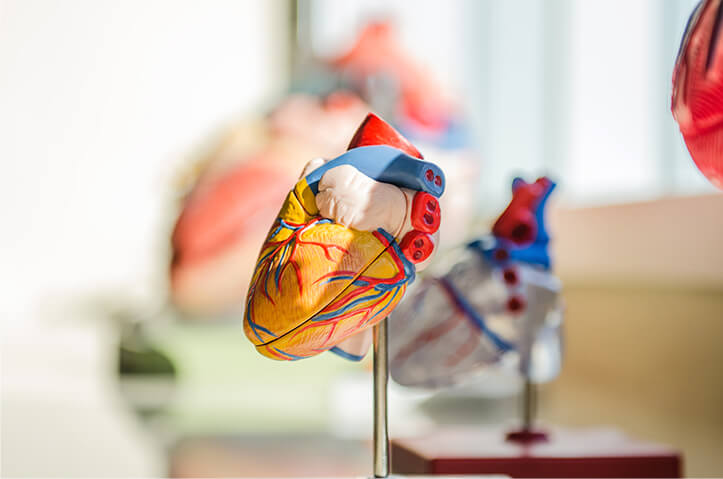
Women and Afib
Last update: March 15, 2024
Why is women’s health important in atrial fibrillation?
Although not obvious, gender differences in the symptoms and treatment of atrial fibrillation (afib) exist and are highly relevant. Women usually report more symptoms and also a larger variety of symptoms when experiencing afib. Some of the female-specific symptoms that are more prominent in women include weakness and fatigue. This is also why women are more likely to be misdiagnosed. We will examine the differences in how atrial fibrillation manifests between men and women.
What is currently known about women and Afib?
The following differences and risks are associated with women and atrial fibrillation:
- Higher disease burden
- More severe afib episodes
- Higher stroke risk
- Female-specific symptom manifestation
- Higher risk during pregnancy and menopause
- Number of children is associated with afib risk
Pregnancy and Afib
While pregnancy is not linked to the risk of developing atrial fibrillation it has been seen to potentially worsen symptoms. A study found that women diagnosed with the disorder were at the highest risk for afib episodes during the third trimester and 46% of these attacks occurred within 24 hours of delivery.
Also treating women with strong medications during pregnancy is a heavily discussed topic as this poses risk to the fetus at the end of the first trimester. For example, the antiarrhythmic drugs Atenolol and Amiodarone have been linked to fetal complications. Pregnant mothers with afib are advised to consult their physician on this matter.
In addition, pregnant women with atrial fibrillation are at a higher risk of developing a blood clot, specifically a thromboembolism due to the loss of normal atrial function. For this reason, some mothers are recommended to take blood thinners by their physician. Interestingly, academics recently found that the number of live-births has an association with atrial fibrillation. Having no children showed a high risk, as did having a larger number of children, specifically more than 3-4 live-births.
Menopause and Afib
A commonly known risk factor, and probably the most significant factor, of developing atrial fibrillation is age. While there is limited evidence that menopause is directly linked to the development of heart rhythm disorders, a study found that 25% or all postmenopausal women develop atrial fibrillation at some point in their lives.
Lifestyle is another important risk factor for this disorder and therefore this statistic is also affected by for example stress, depression, and diet. Women tend to have a higher prevalence of depressive symptoms, post-traumatic stress disorder, and high stress vulnerability which are highly relevant aspects to take into account when considering afib risk. The same study found that postmenopausal women with high-stress lifestyles and a history of depressive symptoms had a higher incidence of atrial fibrillation.
Another study also suggested that women who experienced natural menopause with a shorter total period of reproductive years were at a higher risk of afib and therefore ischemic stroke. This was proposed to be linked to the reduced exposure to exogenous sex hormones.
Stroke and risk of heart attack
While the incidence and prevalence of afib are lower in women than in men, the stroke risk, heart attack risk, overall severity, and mortality tend to be higher in women. A study found that females are associated with increased stroke risk in patients who were not on any anti-coagulants. Similarly, the association between afib and myocardial infarction (heart attack) was seen to be higher in women than in men. These of course lead to an increased mortality in women diagnosed with atrial fibrillation due to the higher risk of complications.
Women tend to have more Afib complications
As a consequence of the higher risk of severe complications and the longer lifespans of women compared to men, women tend to have a higher disorder burden when it comes to afib. The lower quality of life can also be attributed to the misdiagnosis or delayed care of women with the condition.
Treatment outcomes differ for women with Afib
The treatment outcomes also differ between men and women due to physiological and mainly hormonal differences. The interactions and mechanisms of antiarrhythmic drugs are affected by sex hormones and adverse interactions are more common in women. Drug absorption may also be slower in women so this needs to be taken into consideration along with body size, fat composition, and weight. Some pharmaceuticals, specifically cardiac glycosides, have been associated with higher breast cancer risk. Therefore some pharmaceuticals are better suited for women with atrial fibrillation than others and this needs to be taken into account when an antiarrhythmic drug is prescribed. In addition, a study found that women were also more likely to have a higher prevalence of in-hospital catheter ablation complications. This could be due to anatomical differences, mainly the smaller size of female hearts.
References
- Volgman, A. S., Benjamin, E. J., Curtis, A. B., Fang, M. C., Lindley, K. J., Naccarelli, G. V., Pepine, C. J., Quesada, O., Vaseghi, M., Waldo, A. L., Wenger, N. K., Russo, A. M., & American College of Cardiology Committee on Cardiovascular Disease in Women (2021). Women and atrial fibrillation. Journal of cardiovascular electrophysiology, 32(10), 2793–2807. https://doi.org/10.1111/jce.14838
- Lee, M., Chen, W., Zhang, Z., Duan, L., Ng, A., Spencer, H. T., … & Shen, A. Y. (2016). Atrial fibrillation and atrial flutter in pregnant women—a population‐based study. Journal of the American Heart Association, 5(4). https://doi.org/10.1161/jaha.115.003182
- Adamson, D. L., & Nelson-Piercy, C. (2007). Managing palpitations and arrhythmias during pregnancy. Heart (British Cardiac Society), 93(12), 1630–1636. https://doi.org/10.1136/hrt.2006.098822
- Cordina, R., & McGuire, M. A. (2010). Maternal cardiac arrhythmias during pregnancy and lactation. Obstetric medicine, 3(1), 8–16. https://doi.org/10.1258/om.2009.090021
- Zhao, S. X., Tindle, H. A., Larson, J. C., Woods, N. F., Crawford, M. H., Hoover, V., … & Perez, M. V. (2023). Association between insomnia, stress events, and other psychosocial factors and incident atrial fibrillation in postmenopausal women: insights from the women’s health initiative. Journal of the American Heart Association, 12(17). https://doi.org/10.1161/jaha.123.030030
- Yang, S., Kwak, S., Kwon, S., Lee, H. J., Lee, H., Park, J. B., … & Kim, Y. J. (2019). Association of total reproductive years with incident atrial fibrillation, and subsequent ischemic stroke in women with natural menopause. Circulation: Arrhythmia and Electrophysiology, 12(11). https://doi.org/10.1161/circep.119.007428
- Ko, D., Rahman, F., Schnabel, R. B., Yin, X., Benjamin, E. J., & Christophersen, I. E. (2016). Atrial fibrillation in women: epidemiology, pathophysiology, presentation, and prognosis. Nature reviews. Cardiology, 13(6), 321–332. https://doi.org/10.1038/nrcardio.2016.45
- Hosseini, S. M., Rozen, G., Saleh, A., Vaid, J., Biton, Y., Moazzami, K., Heist, E. K., Mansour, M. C., Kaadan, M. I., Vangel, M., & Ruskin, J. N. (2017). Catheter Ablation for Cardiac Arrhythmias: Utilization and In-Hospital Complications, 2000 to 2013. JACC. Clinical electrophysiology, 3(11), 1240–1248. https://doi.org/10.1016/j.jacep.2017.05.005
- Fang, M. C., Singer, D. E., Chang, Y., Hylek, E. M., Henault, L. E., Jensvold, N. G., & Go, A. S. (2005). Gender differences in the risk of ischemic stroke and peripheral embolism in atrial fibrillation: the AnTicoagulation and Risk factors In Atrial fibrillation (ATRIA) study. Circulation, 112(12), 1687–1691. https://doi.org/10.1161/CIRCULATIONAHA.105.553438
- Lu, Z., Aribas, E., Geurts, S., Roeters van Lennep, J. E., Ikram, M. A., Bos, M. M., de Groot, N. M. S., & Kavousi, M. (2022). Association Between Sex-Specific Risk Factors and Risk of New-Onset Atrial Fibrillation Among Women. JAMA network open, 5(9), e2229716. https://doi.org/10.1001/jamanetworkopen.2022.29716
Share this article
















